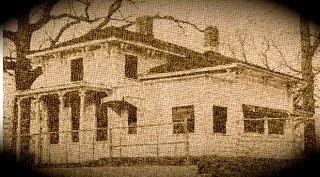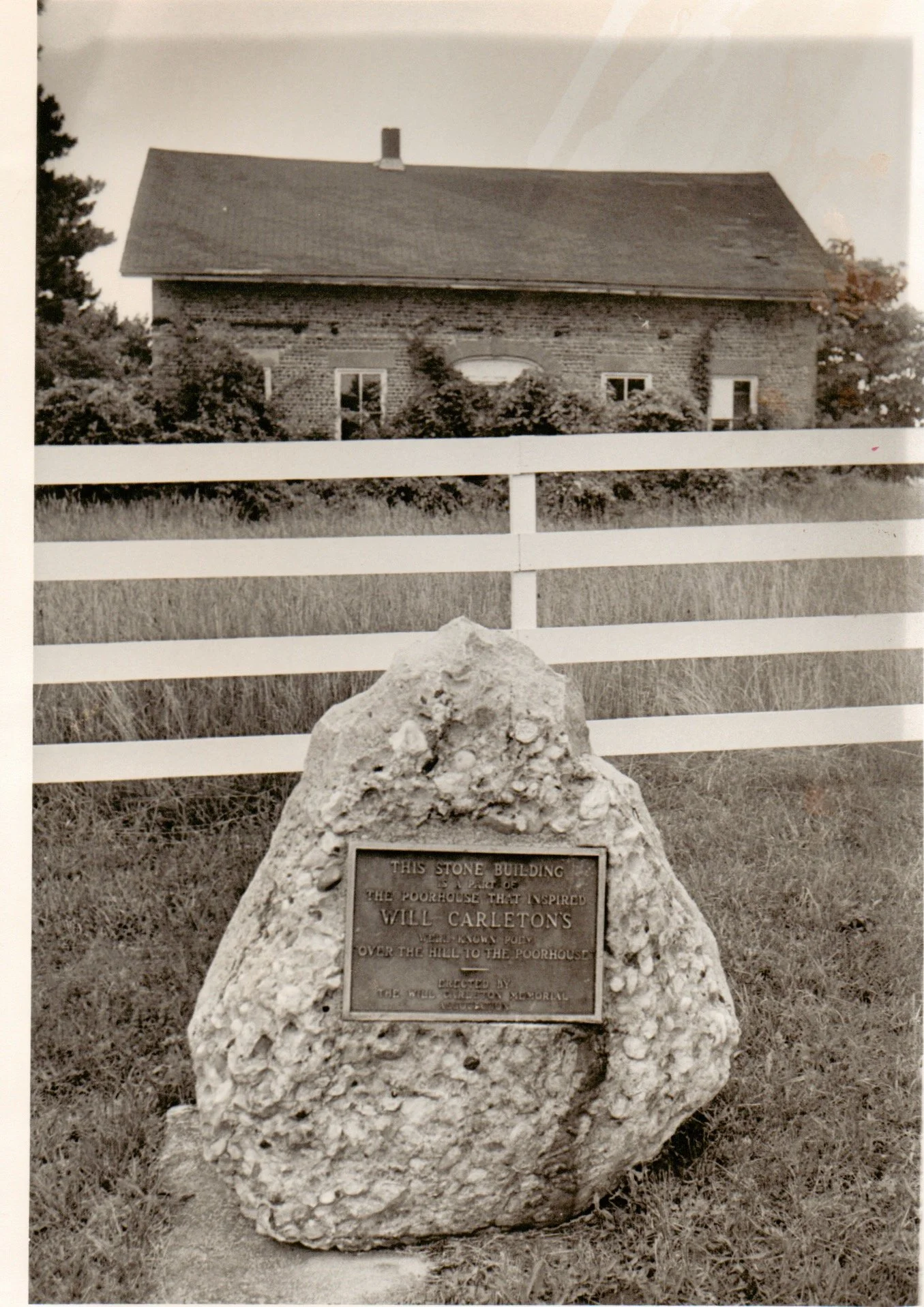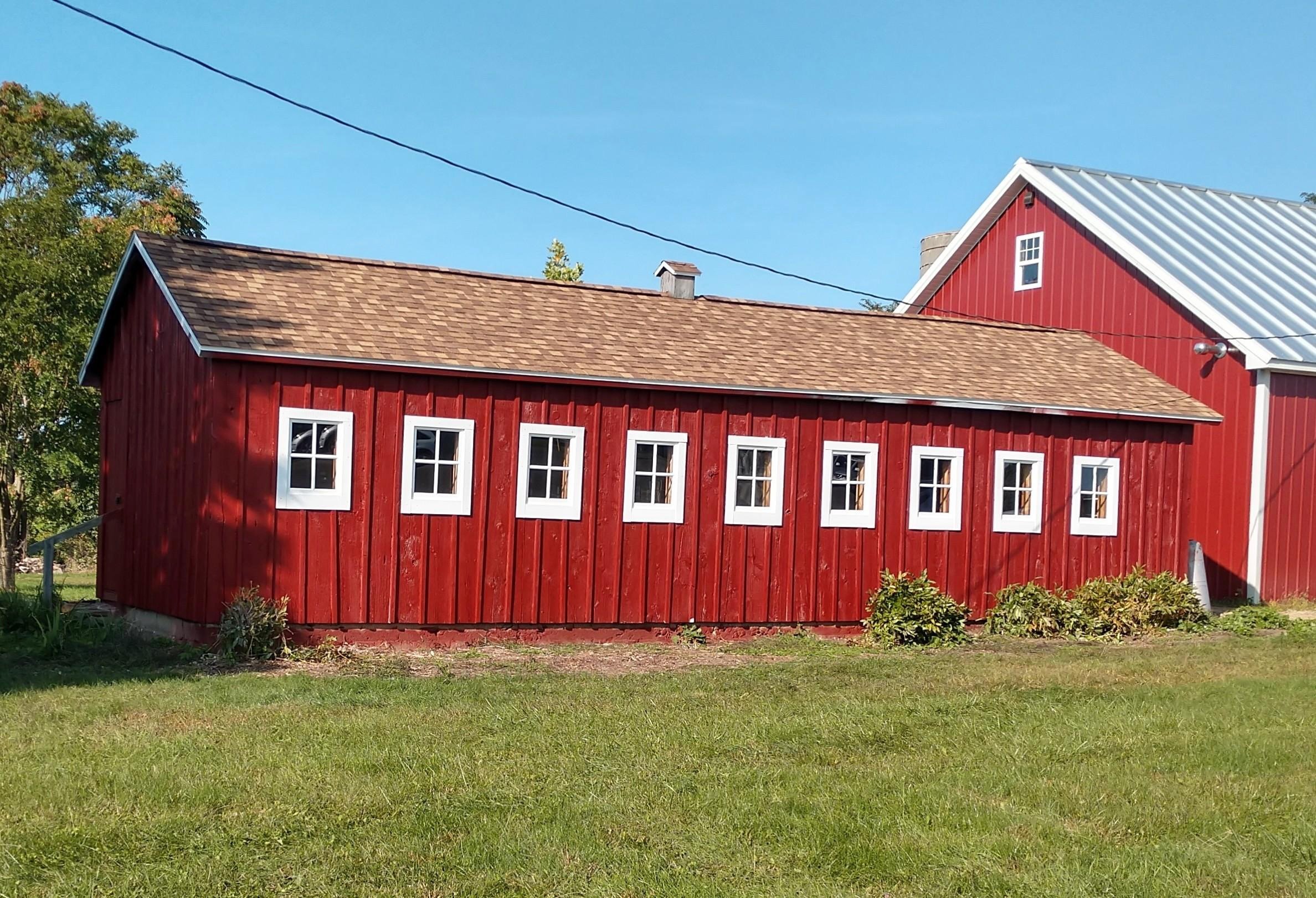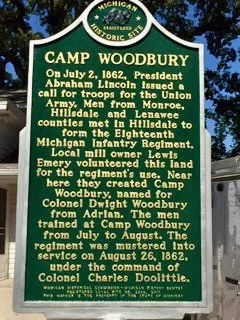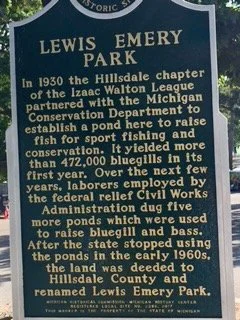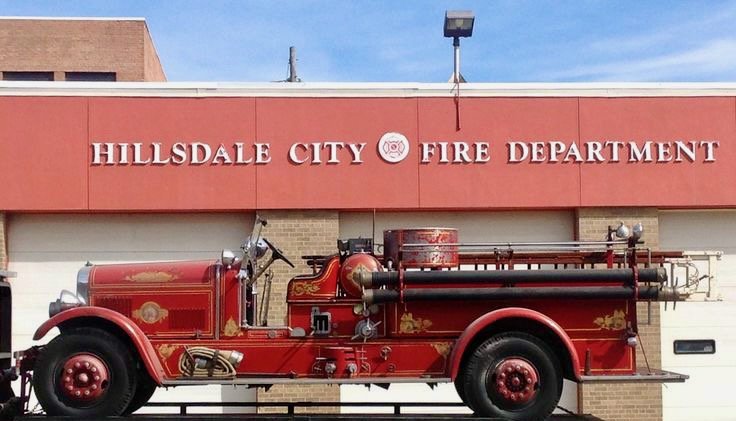Building the Hillsdale County Historical Society
On June 28, 1965, about 30 enthusiastic Hillsdale County history buffs met in the Lewis Emery Park Lodge to create an organization that would help preserve and/or restore any artifacts, records and buildings that are a part of the history of Hillsdale County. Yearly dues were set at a whopping $1, bylaws established, and the Hillsdale County Historical Society was born. Since its establishment, it has remained vibrant because of successive generations who shared, through their own ideas and effort, their love of Hillsdale County history.
On Jan. 28, 1972, Wayne Nichols, Hillsdale County Fair secretary, proposed a partial solution to the need for display and storage of items donated to the Society. With a 99-year lease, he offered the little house on the hill just inside the Broad Street entrance to the Fair. A Society committee made enthusiastic plans to have the building ready for the Fair, setting it up like both a home and a museum.
With the bicentennial of the country in 1976, a local history project was spearheaded by the Society. 150 Years in the Hills and Dales was a massive undertaking that included family biographies, county, town and township histories, histories of businesses and much more. An army of writers contributed, and the two-volume set is a magnificent salute to teamwork on a gigantic scale.
One of the board members was keen to place a marker at the juncture of Michigan, Ohio and Indiana on Cope Road. This finally happened on May 25, 1978 … and then was undone when thieves stole the marker on Feb. 14, 1979. Today, a rough stone marker that may or may not be the original sits outside the Hillsdale County Fairgrounds Museum. A professionally inscribed stone, placed on May 25, 1978, stands (so far) at the intersection of the three states and has become, interestingly, a geocaching target.
The annual renovation awards were initiated, along with the recognition of centennial farms.
In 1987 President Phil Wilson negotiated with Bob Evans Farms, Inc. to have 1.9 acres on the north side of their property deeded to the Hillsdale County Historical Society. This included the former Poorhouse and barn. Both were in desperate need of TLC, and an impressive fundraising effort to renovate the Poorhouse ensued, with generous donations from the community underpinned by a large grant from the Herrick Foundation. Jan Wilson and Bob Keefer took on the almost full-time job of gently and persistently dealing with the damage caused by years of neglect and animal inhabitation in the Poorhouse. Additional volunteers devoted uncountable hours of physical labor. The Amish were hired to reverse and flip the siding on the barn. By 1989 the main floor of the Poorhouse was open to visitors and events were added. They included the Will Carleton Farm Festival in August, which is a collaboration with the Center Adams Antique Tractor and Machinery Club, and Christmas at the Poorhouse in December. The Motor Exposition in June and the Renovation/Preservation/Beautification award presentation in October also became part of the yearly events available to the public.
In addition to their hours spent on the Poorhouse, Jan and Bob created a “general store” in which to sell baked goods during events to cover ongoing Society expenses. Two silos originally stood near the barn, with a connecting roof between them to shelter equipment. One silo was eliminated, and the connecting roof used for the new building. Siding from one of Bob Evan’s old buildings also began a new life on the general store. Clif Booth, Phil Wilson and Phil’s son, Philip, used rough-sawed lumber from Zehr’s sawmill on Reading Road to lay a floor. They also constructed 22 benches.
In 2015 the General Store was updated through the efforts of Jim and Sally Anspaugh. Planks cut from the pine trees along the side of the driveway were used for new walls and a ceiling. Jim and Sally purchased items that would have been for sale in an early general store. They also used the pine planks to cover the south side of the barn, with their grandson Zac Boughman helping as their painter.
The Civil War touched Hillsdale County when hundreds of young men enlisted in the 18th Michigan Infantry, encamping on Lewis Emery’s farm with its abundant springs that provided water for cooking and drinking. From 2001 to 2010 an encampment of 18th Michigan Civil War re-enactors at the Poorhouse included a battle re-enactment and Ghost Tour in Oak Grove Cemetery, with re-enactors speaking as the “ghosts” of those who were involved in the Civil War. Barb and Bill Smith were instrumental in getting a Michigan Historic Marker placed to honor both the 18th and the years during the Depression era when a program employed other young men to dig the rearing ponds at Emery Park.
As it did with 150 Years in the Hills and Dales, the Society offered county history in print. A total of five “Ghost Walk” booklets of short articles were published yearly between 2011 and 2015. To celebrate the sesquicentennial of Hillsdale in 2019, a sixth Ghost Walk booklet was added. A website, hillsdalehistoricalsociety.org, was established in 2012. With viewership that reaches beyond the county, it has over 350 articles about the people, places and things in Hillsdale County’s past.
The world ground to a halt with the pandemic of 2020, as did Society events. In 2021 the Society began making up for lost time. The Barn Museum, made possible by a generous donation from the late Becky McCavit, became an exhibition space for the 1931 Seagrave fire engine and many treasures that were stored in the cellar of the Poorhouse. Society curator Darin Sheffer carefully selected items that would have general appeal, including some land grant documents signed by presidents Van Buren and Lincoln. Kathy Fowler landscaped the Poorhouse grounds, as well as heading a committee that established a successful motor exposition of old cars held in June.
Both the Fairgrounds Museum and the Poorhouse benefited from Bob Kline’s determination. Although the Society was responsible for the upkeep inside the Museum, the Fair Board was responsible for the upkeep of the outside. It had been decades since a concerted effort was made to thoroughly scrape the multiple layers of exterior paint before repainting. Aided by a very generous donation from Rick and Dar Copp for the purchase of paint, in the summer of 2022 Bob decided to scrape the Museum correctly before repainting it. He finished two sides that year and in 2023 had help completing the other sides, as well as with repainting the inside.
Bob Kline, Darin Sheffer, Lynn Burkett and Morgan Morrison obtained grants from Preserving America, the Hillsdale County Community Foundation and others to furnish the first floor of the Poorhouse only with items from the mid-1800s, when it was built by Isaac VanDenBergh and then sold to the county for a Poorhouse. The large upstairs room was set up to look like a sleeping room when the building was a Poorhouse, and the small upstairs room is a tribute to Will Carleton.
The mission established in 1965 by the first members of the Hillsdale County Historical Society has been nurtured by successive generations of members who have contributed their own ideas and energy.
JoAnne P. Miller

